5 Tips for Choosing Your First Wig or Topper
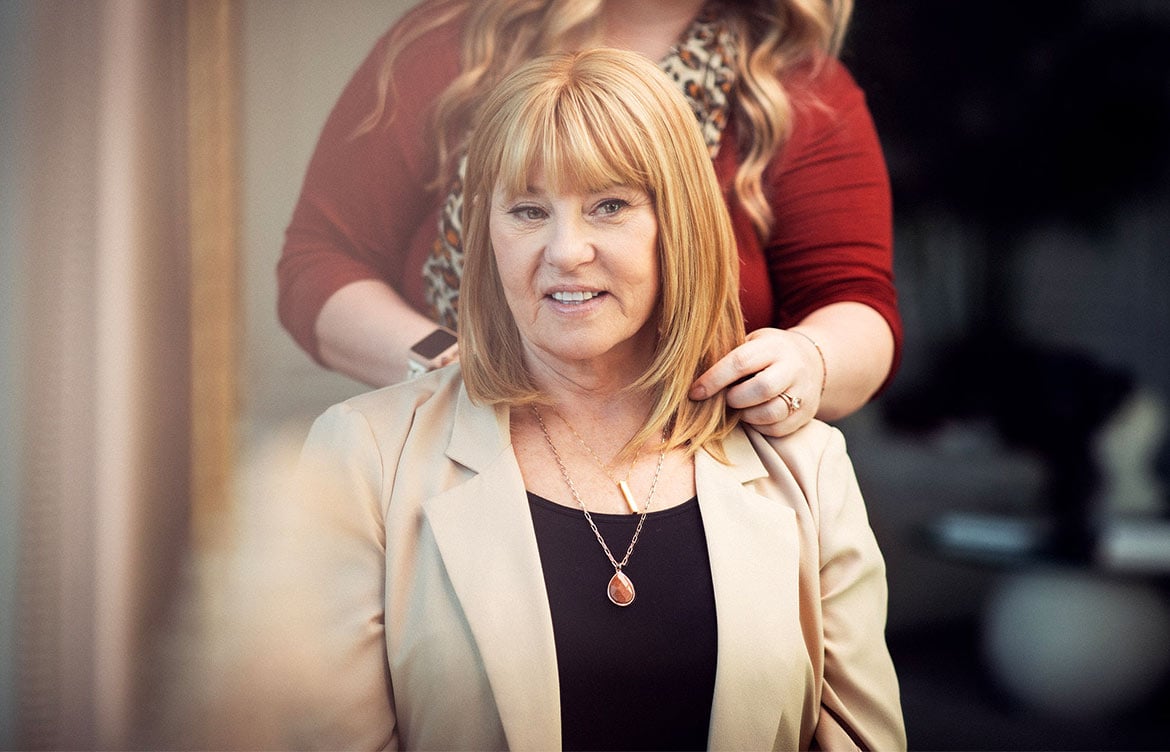
Are you feeling overwhelmed at the thought of choosing your first wig or topper? Wondering how to navigate the vast array of options as you plan to deal with your hair loss or hair thinning?
At Daniel Alain, we hear our customer’s questions about how to choose their first hairpiece every day. We’ve consolidated the main considerations we recommend, to ensure you make a choice that looks natural, feels comfortable, and fits your lifestyle and budget.
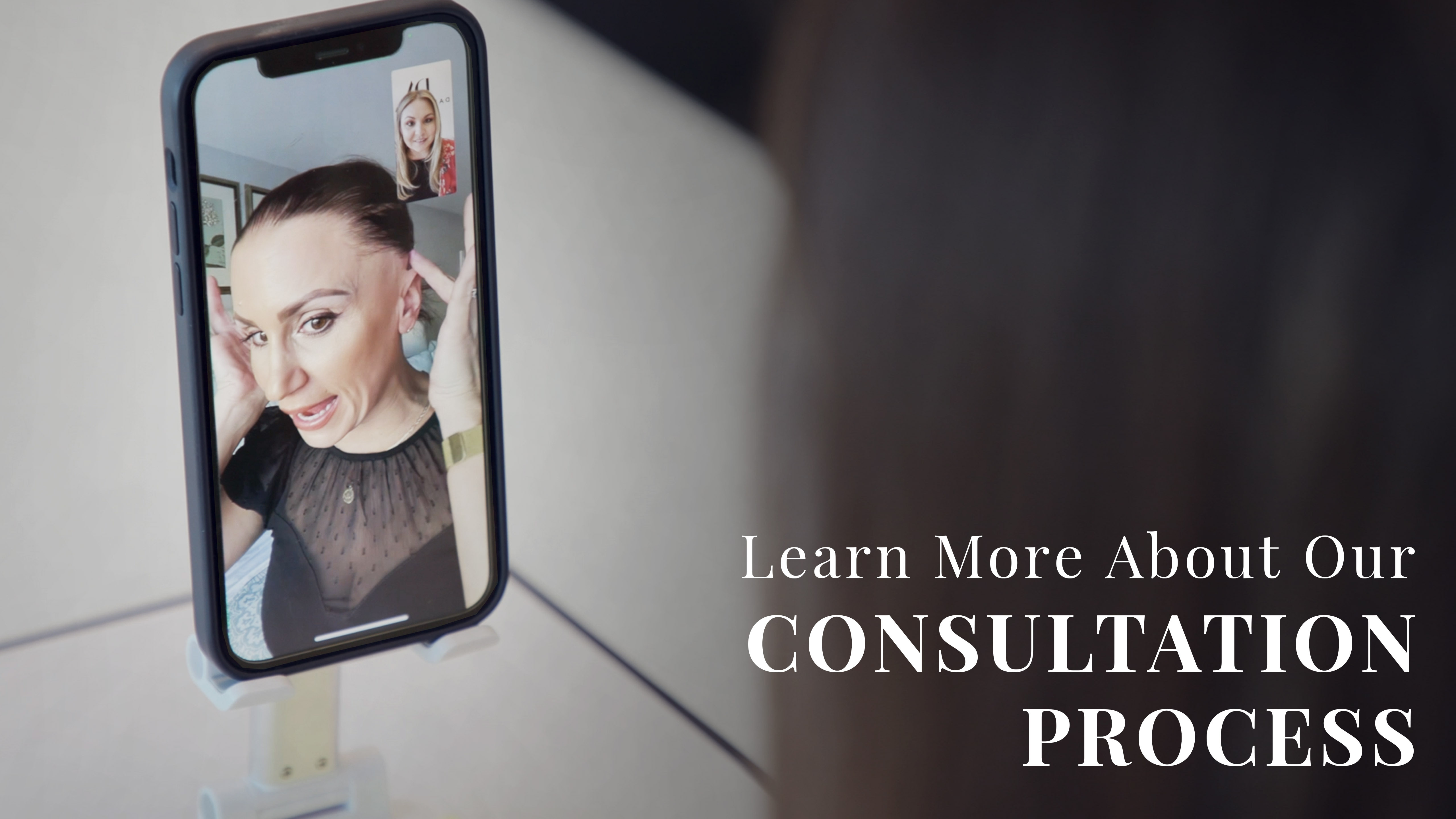
Tip #1. Choose the Hair Type: Synthetic vs. Human Hair
One of the first decisions you’ll face is choosing between synthetic and human hair. Human hair offers longevity, durability, and the most natural look. They can be a fantastic investment for people seeking quality and versatility.
Synthetic wigs, on the other hand, may be a good option for wig newbies or anyone looking for a temporary change without a hefty price tag. While they don’t have the most realistic look, they do offer ease of use and a lower financial commitment which makes them a great starting point for many people.
Daniel Alain customer, Patricia, invested in her Follea René human hair wig a few years ago after suffering from hair loss related to genetics. “Everybody in my family has thin hair. I love wearing my Follea human hair wig as it gives me the full head of beautiful, natural hair I’ve craved my whole life!”
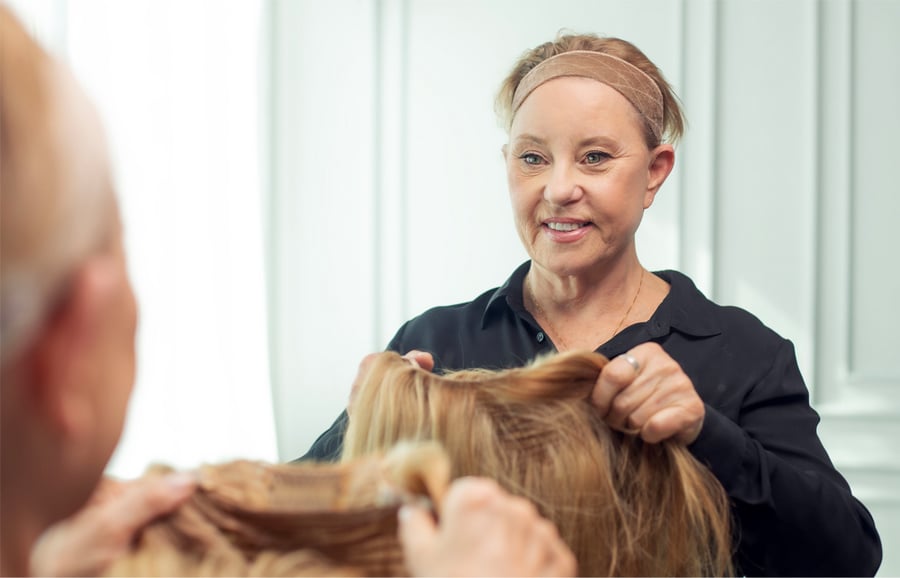
“For activities like gardening or going to the beach, where I’m out in the sun, sweating, and getting a bit dirty, I switch to a high-quality synthetic wig. It’s like having the best of both worlds - I can enjoy the natural look and feel of my Follea for day-to-day wear, and rely on my synthetic wig for those moments when practicality takes precedence.”
Tip #2. Consider a Hair Topper
Choosing between a full wig and a hair topper depends largely on the extent and pattern of hair loss. Hair toppers are specifically designed for people who are experiencing loss or hair thinning primarily at the top of the head or at the crown. Hair toppers add volume and density to thinning hair but do require a stable front hairline for proper attachment. For people in the early stages of hair loss or seeking extra volume, a hair topper might be the right choice.
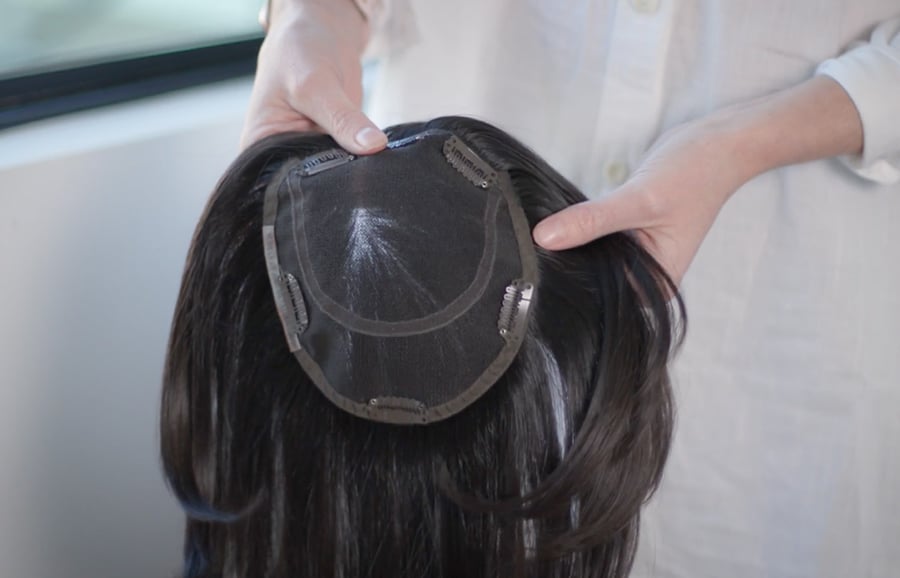
One of our customers, Merritt, started her journey with a topper and eventually transitioned into a full wig as her hair loss progressed. She explains,
"When I first started noticing my hair thinning, a topper was the perfect solution. It covered exactly where I needed it most, bringing back the volume and density on the top of my head without overwhelming me with a full wig.
Eventually, my hair loss progressed to a point where a topper just wasn't enough. Making the transition to a full wig was emotionally challenging; it was hard to accept that my hair loss had advanced so far.
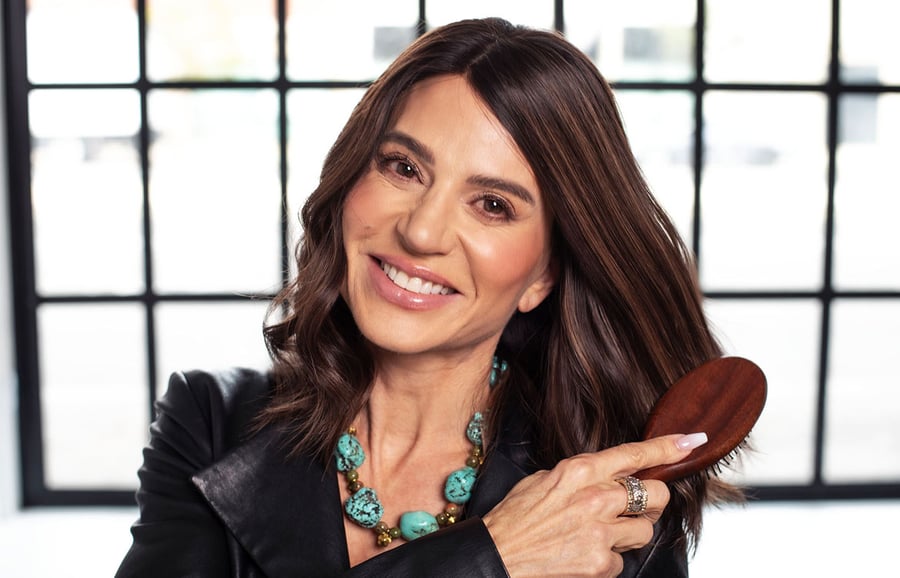
However, once I embraced wearing wigs, it opened up a new chapter for me. I discovered the joy and freedom they offered. One day I’m a blonde, the next a brunette, and it has become a fun and creative part of my life. Both the topper and the wig served me well at different stages of my hair loss journey, helping me to not just cope with the changes but to thrive and embrace life with confidence and style."
Tip #3. Find a Well-Fitting Wig
A well-fitting wig or topper should give you confidence in your appearance, feel secure, and be comfortable to wear all day. Daniel Alain retail partner and owner of Designs by Echo wig salon in San Diego, CA, attests to the importance of a good fit.
"In my twenty years in the industry, I've seen the disappointment that comes from buying a wig online without proper consultation or measurements. A wig that doesn't fit well won't look natural or feel comfortable, and will undermine your confidence.”
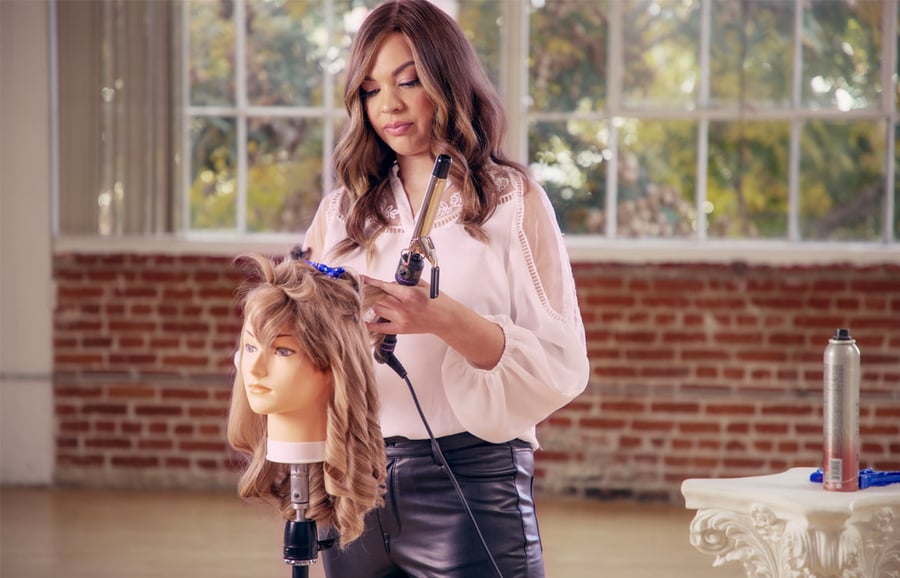
Consultation and Measurement: The journey to a flawless fit begins with professional guidance via a consultation. Seeking out an expert who specializes in wigs and toppers can make all the difference. These professionals are skilled in measuring your head to determine the ideal cap size for a wig or base size for a topper. They consider your specific areas of hair loss to recommend the best fit. This personalized approach ensures that your wig or topper complements your natural features and sits comfortably without shifting.
Trying on Different Options: Like finding the perfect pair of shoes, trying on different wigs or toppers is essential. This hands-on experience allows you to feel the difference between cap sizes, and how each one sits on your head. It's an opportunity to move around, look at yourself from different angles, and truly assess what feels right. Remember, comfort is key. A wig that's too tight can cause tension headaches, while one that's too loose might shift around.
Wide Range of Cap Sizes: Opt for brands that offer a range of cap sizes. Everyone's head is unique, and a one-size-fits-all approach doesn't apply when it comes to wigs. Brands that cater to a broad spectrum of sizes demonstrate a commitment to accommodating the individual needs of their customers, ensuring you're more likely to find a piece that feels like it was made just for you.
Adjustable Straps: Many modern wigs come equipped with adjustable straps at the nape of the cap. These straps allow for minor adjustments to achieve a comfortable and secure fit.
Tip #4. Find a Wig That Suits Your Lifestyle
When you’re choosing a wig or topper for the first time, we encourage customers to reflect on their lifestyle before making a purchase. Your daily activities, routine, and commitment to hair care play a significant role in determining which type of hairpiece will best suit your needs.
For people with a busy schedule or who prefer a straightforward, easy-to-manage solution, synthetic wigs can be a practical choice. These wigs are made to retain their style and shape with little to no effort. Synthetic wigs hold the same look without the need for frequent styling.
If you enjoy styling your hair or seek a hairpiece that offers the flexibility to change styles according to your mood or the occasion, a human hair wig may better suit your preferences. Human hair wigs provide the closest experience to natural hair and allow for heat styling, coloring, and other changes in style.
Sally wears a wig from the Gripper Lite collection by Follea. After suffering from extensive hair loss, finding a wig that looked natural and suited her active lifestyle was important. As a personal trainer, she knew she needed a wig that felt secure on her head no matter what she was doing.
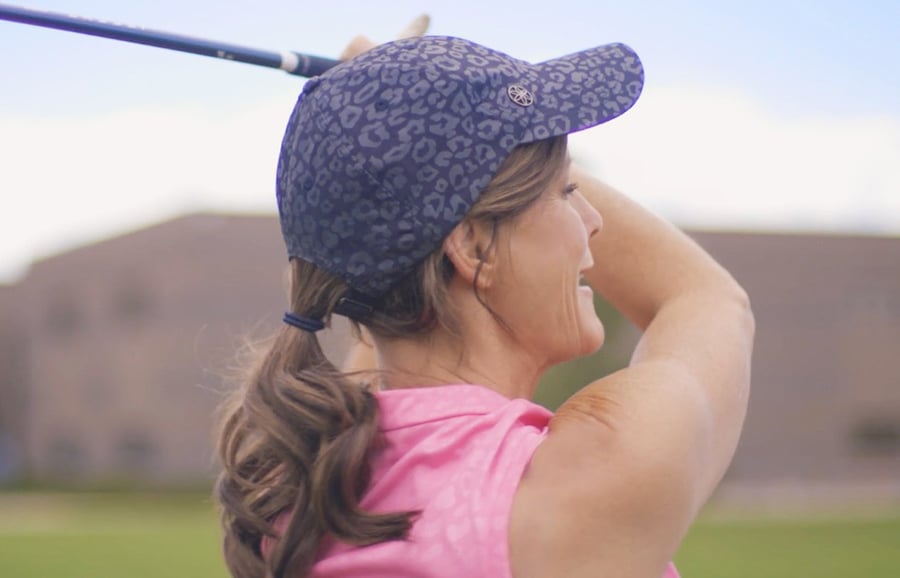
“I love to golf. I play a little tennis. I love hiking and biking. Anything outdoors,” Sally explains.
“I was initially a little concerned about it staying on, specifically in the wind. But I am happy to report that I had no issues. I even took my wig on our honeymoon to Italy. I was able to wear it boating, kayaking, and on planes, trains, and automobiles!”
Tip #5. Consider your Budget
When you’re choosing an expensive wig or topper, budget will likely play a role in your decision-making. It’s important to weigh up the upfront cost and the long-term value of your investment.
Opting for a less expensive option might seem appealing initially, but it’s important to consider how the quality and durability of the hairpiece will meet your needs over time.
One of our customers, Mirna, has been wearing wigs for several years after suffering from alopecia. Her wig journey had its ups and downs in the beginning, but she eventually found her dream hair and hasn’t looked back since.
“If you don’t feel beautiful in your new wig, you’ll always be on the hunt for the perfect one,” she says.
“If you’re spending $600 here and $1000 there, over a couple of years or so, that really adds up. You might as well just buy yourself a really good wig the first time around.”
Synthetic and low-quality human hair wigs, while more budget-friendly at the outset, will require frequent replacement, especially with regular wear, compared to a high-quality human hair wig.
High-quality human hair wigs, despite their initial price tag, may prove more cost-effective in the long run. They can withstand daily wear and the rigors of styling, washing, and even coloring, much like natural hair, and with proper care and maintenance, will likely last several years. Our Follea wigs and toppers by Daniel Alain typically last 2 - 4 years, and often even longer.
When planning your budget, consider how the quality, durability, and expected lifespan of the wig or topper align with your long-term needs and preferences.
Where do I go from here in choosing my first wig or topper?
Embarking on the journey to find the perfect wig or topper may often be a path filled with many emotions.
With these tips, you’ve gained insights into choosing between synthetic and human hair, the importance of a good fit, and how to balance quality with budget. You should be feeling more confident about making an informed choice that aligns with your personal needs and preferences.
The next step is to consult with a professional who can help you take accurate measurements and choose a piece that complements your lifestyle and look. Explore our Learning Center for more resources, reviews, and personal stories to continue learning and find the support you need on your journey to finding the perfect wig or topper.


.jpeg)